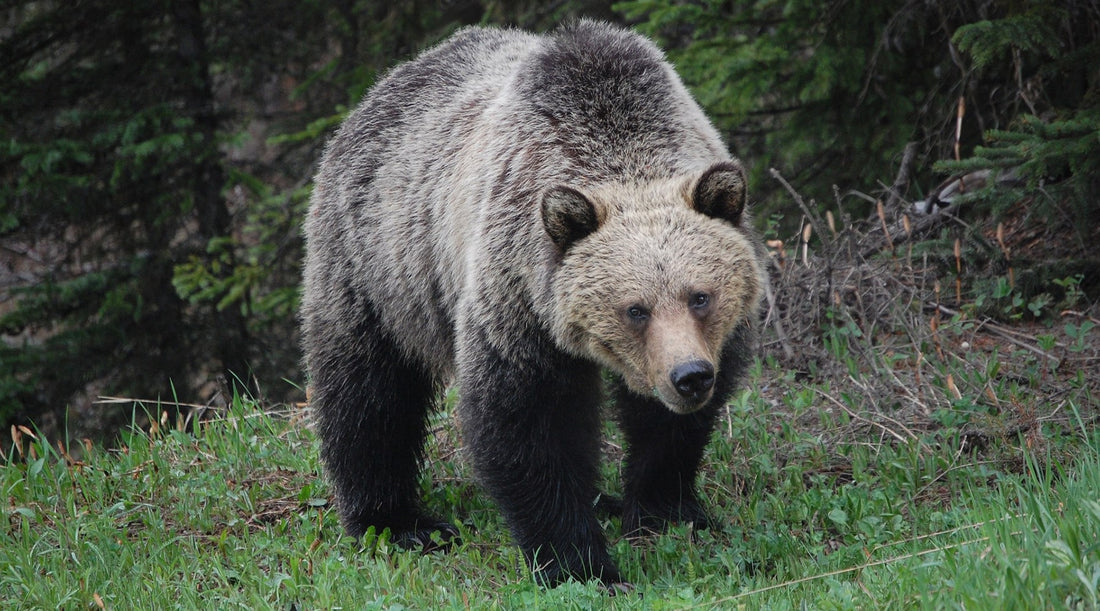Encountering a bear in the wild can be both exhilarating and unnerving, especially if the bear seems to be following you.
While bears are generally shy and avoid human contact, it's essential to know how to react in such situations to ensure a safe outcome for both you and the bear. Below, we'll explore what to do if a bear is following you while hiking and offer some tips for hikers to deal with this situation safely.
Stay Calm and Assess the Situation:
-
Remain Calm:
- Keep a clear head and avoid panicking. Maintaining composure is crucial for making rational decisions in bear encounters.
-
Determine the Type of Bear:
- Identify the species of bear. Black bears and grizzly bears may require different responses, as grizzlies are generally more assertive.
React Appropriately Based on Bear Type:
-
For Black Bears:
- Make Yourself Known: Speak calmly, clap your hands, or use a bear bell to make your presence known. Most black bears will likely retreat once aware of your presence.
- Stand Your Ground: If the bear continues to follow, stand your ground. Never run, as this may trigger a chase instinct.
- Use Bear Spray: If you have bear spray, be prepared to use it. Aim for the bear's face if it approaches within a close range.
-
For Grizzly Bears:
- Play Dead (If Attacked): In the rare event of a grizzly bear attack, playing dead is generally recommended. Lie flat on your stomach with your hands clasped behind your neck and legs spread to make it harder for the bear to flip you over.
- Fight Back (If Attacked): If a grizzly continues to attack, fight back vigorously. Use any available tools, rocks, or bear spray to fend off the bear.

General Tips for Bear Encounters:
-
Carry Bear Spray:
- Have Bear Spray Accessible: Carry bear spray in an easily accessible holster on your belt or backpack strap. Familiarize yourself with its usage before heading into bear country.
-
Avoid Eye Contact:
- Avoid Direct Eye Contact: In the animal kingdom, direct eye contact can be perceived as a threat. Avoid staring directly at the bear, and instead, glance sideways to appear non-threatening.
-
Speak Calmly:
- Speak in a Calm Tone: Talk to the bear in a calm and steady voice. This lets the bear know you're human and may help alleviate its curiosity.
-
Back Away Slowly:
- Maintain Eye Contact While Backing Away: If the bear is following you, maintain eye contact and back away slowly. This shows the bear you are retreating without being confrontational.
-
Create Distance:
- Increase Separation: If the bear continues to follow, try to increase the distance between you and the bear without running. Running may trigger a chase response.
After the Encounter:
-
Report the Incident:
- Inform Local Authorities: If the bear behavior was concerning, report the incident to local wildlife authorities. This information aids in monitoring bear populations and behaviors.
-
Reflect on the Encounter:
- Learn from the Experience: Reflect on the encounter and consider adjustments to your hiking practices, such as making more noise to alert bears to your presence.
Conclusion:
Encounters with bears while hiking can be awe-inspiring, but it's crucial to prioritize safety for both humans and bears. By staying calm, using appropriate responses based on bear type, and following general bear safety guidelines, hikers can navigate these encounters with confidence.
If you're planning a trip in bear country, please remember to be prepared. We always suggest carrying bear spray when entering an area bears are known to frequent. This is especially true if hiking in grizzly bear territory. Doing so will help keep both you and the bear safe.

